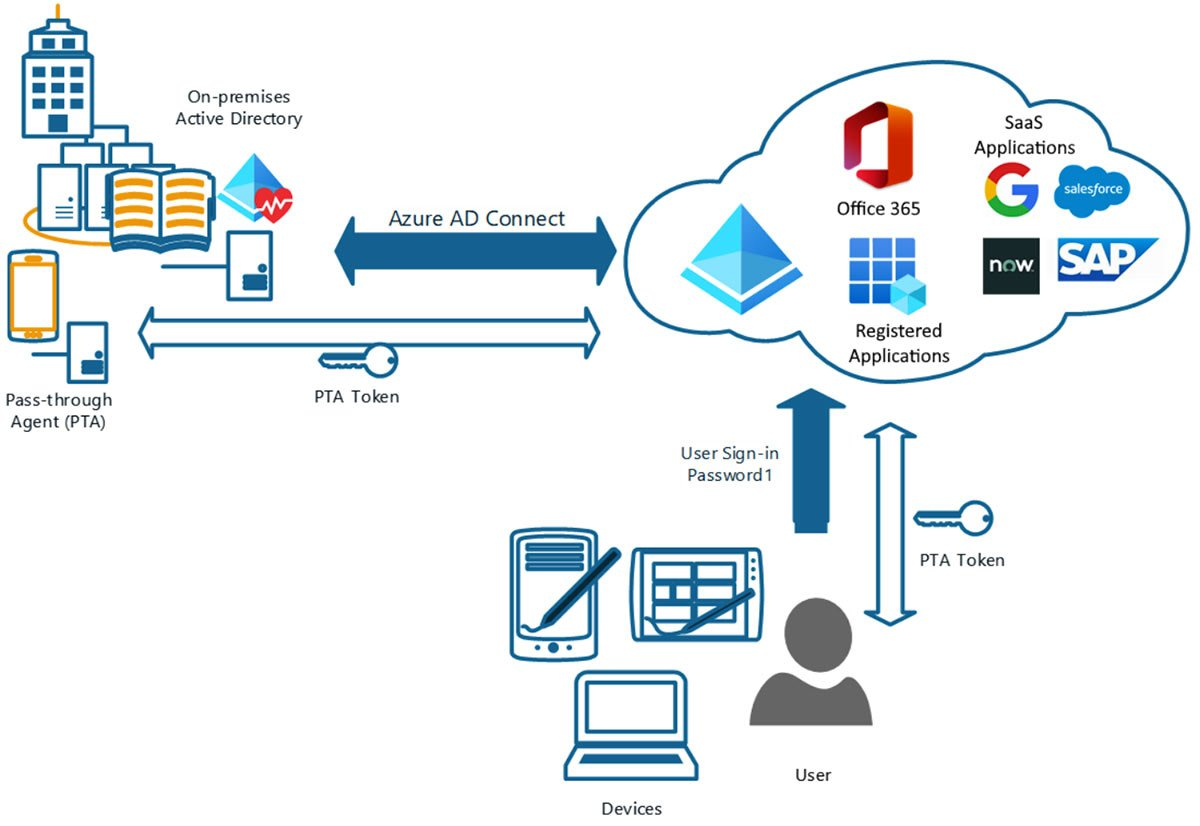Cloud application synchronization is revolutionizing the way businesses manage their data in an increasingly digital landscape. This innovative process ensures that data remains consistent and up-to-date across various platforms, making it essential for organizations leveraging cloud hosting services and business cloud solutions. Chief Information Officers (CIOs) looking to streamline operations are prioritizing robust synchronization strategies, especially with the rise of tools like Microsoft Exchange hosting that facilitate seamless collaboration. As companies transition to the cloud and embrace data synchronization, the importance of reliable and secure systems cannot be overstated. With the right cloud solutions in place, businesses can confidently harness the power of technology to enhance productivity and protect sensitive information.
As digital transformation makes waves across industries, the management of seamlessly linked cloud applications is becoming paramount. Often referred to as data integration across remote servers, this advanced method of application coordination allows teams to access their information anytime, anywhere. The evolution of enterprise solutions towards integrated functionalities emphasizes the growing necessity for businesses to adopt modern technology like Exchange hosting. By enabling a smoother flow of data, organizations can ensure operational efficiency, ultimately fueling CIO cloud adoption for future growth. Emphasizing data connectivity in an increasingly mobile world, the concept of synchronized cloud applications is set to redefine how companies operate.
Understanding Cloud Application Synchronization
Cloud application synchronization refers to the process of ensuring that data across multiple platforms remains consistent and up-to-date in real-time. This technology has become paramount as businesses increasingly rely on cloud hosting services for their operations. In particular, the synchronization features provided by cloud applications like Microsoft Exchange hosting have transformed the way organizations handle their information. With seamless access to vital data from various devices, employees can enhance their productivity no matter where they are, showcasing the power of modern business cloud solutions.
However, despite these advancements, many Chief Information Officers (CIOs) remain hesitant regarding full cloud adoption. The cloud’s inherent promise of security and efficiency can often be overshadowed by concerns surrounding data integrity and confidentiality. CIOs must navigate the fine line between leveraging cloud application benefits while ensuring that sensitive information is protected from breaches, thereby making a robust strategy for cloud data synchronization essential for businesses.
The Importance of Data Synchronization in the Cloud
Data synchronization is crucial for businesses leveraging cloud services, as it enables real-time updates across different devices and applications. This capability ensures that employees have access to the most current information, which is vital for decision-making in a fast-paced business environment. For organizations that utilize Exchange hosting and similar services, efficient data synchronization minimizes the risk of errors that can arise from outdated information, thereby enhancing operational efficiency.
In the era of remote work and flexible office solutions, the demand for reliable data synchronization has surged. With employees using various devices, from desktop computers to smartphones, businesses require solutions that can bridge these platforms effectively. Cloud application synchronization empowers teams by allowing them to access their necessary tools and information regardless of their location, improving collaboration and workflow across departments.
Challenges for CIOs in Cloud Adoption
While the advantages of cloud computing are evident, Chief Information Officers face several challenges in cloud adoption. One of the most significant hurdles is the synchronization of confidential data across various platforms. Many CIOs express concerns over the integrity and security of sensitive information when utilizing cloud services. This is particularly pertinent in industries governed by strict compliance regulations where data breaches can lead to severe consequences.
In addition to security concerns, the financial implications of transitioning to cloud hosting services are also a topic of debate among CIOs. Balancing the costs associated with cloud migration, including data synchronization solutions, versus the long-term benefits can be a daunting task. Organizations must evaluate not just the immediate investments, but also the future scalability and the potential for innovative business cloud solutions that can arise from a successful cloud strategy.
Navigating Exchange Hosting Solutions
Exchange hosting solutions have become a popular choice for many businesses looking to optimize their data management and communication. These services allow companies to enjoy the benefits of email hosting and data synchronization without the overhead of maintaining their own servers. Businesses can streamline their operations by utilizing Microsoft Exchange hosting, which provides users with various tools that enhance productivity and collaboration.
Moreover, the transition towards Exchange hosting aligns with broader trends in cloud technology. Many organizations are now recognizing the importance of having a reliable and secure hosting environment, particularly for sensitive correspondence. As data synchronization continues to evolve, businesses that adopt these technologies can leverage them to improve both internal communication and customer engagement.
Seamless Data Flow with Cloud Solutions
One of the defining features of cloud solutions is their ability to facilitate seamless data flow across various applications and devices. This is especially critical for companies that require real-time data updates and access, such as those using Microsoft Exchange synchronization. With cloud technology, employees can move fluidly between devices while maintaining a constant connection to their data, thereby fostering a more agile work environment.
As businesses strive to enhance efficiency, adopting cloud solutions that support seamless data flow is becoming crucial. By leveraging these technologies, organizations can eliminate the uncertainties tied to data transfer and synchronization, ensuring that all team members have access to accurate and timely information at all times. This leads to improved productivity and helps maintain a competitive edge in today’s fast-paced business landscape.
Future of Cloud Application Synchronization
The future of cloud application synchronization holds great promise as technology continues to advance. Innovations in data management are paving the way for even more sophisticated solutions that enhance connectivity and data integrity. Businesses that stay abreast of these developments will have the opportunity to leverage new tools that can streamline their operations and improve workforce collaboration.
With leading tech companies investing in enhanced synchronization protocols and solutions, organizations can look forward to improved security features that increase data safety during transfers. This ongoing evolution in cloud application synchronization will empower businesses, from small to enterprise level, to cultivate a more dynamic and responsive operational environment, further pushing the limits of what cloud hosting services can achieve.
Advantages of Cloud Hosting Services
Cloud hosting services offer numerous advantages to businesses, ranging from cost-effectiveness to scalability. Companies can save on physical infrastructure costs as cloud solutions allow them to leverage external resources managed by service providers. This pay-as-you-go model is especially appealing for small to medium-sized enterprises looking to optimize their IT budgets while still taking advantage of sophisticated hosting solutions.
Additionally, cloud hosting services provide heightened flexibility, allowing businesses to scale their operations rapidly in response to changing market conditions. This adaptability is crucial for organizations aiming to capitalize on new opportunities without the delay typically associated with traditional infrastructure. As a result, cloud hosting becomes a vital component of modern business strategies, driving efficiency through enhanced data synchronization and reliable access to essential information.
The Role of Cloud Solutions in Business Transformation
Cloud solutions are playing an integral role in business transformation as organizations seek to modernize their operations and enhance their digital capabilities. The migration to cloud platforms not only facilitates seamless data synchronization but also enables businesses to leverage advanced analytics and artificial intelligence. This allows for data-driven decision-making, giving businesses a competitive edge in their respective industries.
Furthermore, the embrace of cloud technologies is reshaping workforce dynamics, promoting remote work and collaboration. By adopting cloud applications, organizations can create a more flexible work environment where employees are empowered to perform their tasks from any location. This transformation is essential for businesses looking to attract and retain talent in a competitive job market, highlighting the importance of cloud adoption in today’s economy.
Enhancing Security in Cloud Application Synchronization
As businesses increasingly rely on cloud application synchronization, the emphasis on security has never been more critical. With sensitive information being transferred between devices and platforms, organizations must implement robust security measures to protect their data from potential breaches. This includes utilizing encrypted connections, multi-factor authentication, and frequent security audits to ensure that their cloud hosting services are secure and compliant with industry regulations.
Moreover, staying informed about the latest security trends and threat vectors is vital for CIOs and IT teams. As cyber threats evolve, businesses must continuously adapt their security strategies to mitigate risks associated with cloud data synchronization. By prioritizing security in their cloud initiatives, organizations can confidently harness the power of cloud technologies while safeguarding their confidential information.
The Growing Impact of CIO Cloud Adoption
The role of the Chief Information Officer is evolving significantly as cloud adoption becomes more prevalent in the corporate landscape. CIOs are now tasked with leading the transition to cloud solutions, ensuring that their organizations capitalize on the benefits of cloud hosting services while addressing any operational challenges in the process. Their leadership is crucial in formulating strategies for data synchronization while maintaining security and compliance.
Furthermore, as CIOs embrace cloud technologies, they also become catalysts for cultural change within their organizations. Encouraging a cloud-first mentality helps to foster innovation and agility, pushing teams to leverage cloud applications effectively. This transformation not only enhances business performance but ultimately drives organizational growth through increased efficiency and a strategic focus on data-driven decision-making.
Frequently Asked Questions
What is cloud application synchronization and how does it work?
Cloud application synchronization refers to the process of ensuring that data across various cloud-hosted applications is consistent and up-to-date. This is achieved through technologies like data synchronization, which allows users to access the same content from different devices seamlessly, whether they are working on business cloud solutions or utilizing services like Microsoft Exchange synchronization.
How do cloud hosting services facilitate effective data synchronization?
Cloud hosting services provide the infrastructure needed for efficient data synchronization by allowing multiple users to access and update information in real-time. This ensures that all changes are automatically propagated across all devices and platforms, enhancing collaboration and productivity for organizations adopting CIO cloud adoption strategies.
Is Microsoft Exchange synchronization considered a cloud application?
Yes, Microsoft Exchange synchronization is categorized as a cloud application. It allows users to sync their emails, calendars, and contacts across devices through leased Exchange hosting services provided by Microsoft, making it an integral part of many business cloud solutions.
What are the benefits of using cloud application synchronization for businesses?
Cloud application synchronization offers several benefits, including enhanced accessibility, as users can retrieve and modify data from any device and location. This flexibility is critical for businesses leveraging cloud hosting services and aiming to improve operational efficiency through seamless data synchronization.
How secure is cloud application synchronization for confidential data?
The security of cloud application synchronization varies by provider, but many reputable cloud hosting services employ advanced encryption and security protocols to protect confidential data during transmission and storage. Organizations must evaluate their cloud solutions carefully to ensure data synchronization meets their security and compliance needs.
What role do CIOs play in cloud application synchronization adoption?
Chief Information Officers (CIOs) play a crucial role in cloud application synchronization adoption as they are responsible for assessing the organization’s needs, choosing the right cloud solutions, and ensuring that synchronization processes are secure, efficient, and aligned with business objectives. Their leadership is essential for driving successful cloud strategies.
Can Google’s synchronization services integrate with other cloud applications?
Yes, Google’s synchronization services are designed to integrate with various cloud applications, allowing users to maintain consistent access to their data regardless of the platform. This interoperability is part of the broader capability of modern business cloud solutions, facilitating efficient data synchronization for users across different devices.
What challenges do businesses face with cloud application synchronization?
One of the primary challenges businesses face with cloud application synchronization is ensuring data security and compliance with relevant regulations. Additionally, managing multiple cloud-hosted applications and achieving seamless integration can be complex, requiring careful planning and governance from IT departments.
How has the cloud changed the landscape of data synchronization?
The cloud has revolutionized data synchronization by enabling real-time updates and global accessibility. It allows employees to access their data from anywhere, on any device, which is crucial for productivity in a mobile-driven workplace. This evolution is essential for businesses adopting modern cloud-hosting solutions.
What should businesses consider when evaluating cloud applications for synchronization?
When evaluating cloud applications for synchronization, businesses should consider factors such as security measures, integration capabilities with existing systems, user experience, compliance with regulations, and the overall costs associated with cloud hosting services and data synchronization solutions.
| Key Points |
|---|
| Many businesses are adopting hosted software and services in private clouds. |
| Synchronization of confidential data presents ongoing challenges for businesses. |
| CIOs may not be adequately prepared to implement cloud solutions. |
| Microsoft offers leased Exchange hosting services, now seen as a cloud application. |
| Google and others are developing synchronization services for seamless data access across devices. |
| Users are concerned about security and the implications of adopting cloud services. |
Summary
Cloud application synchronization is becoming increasingly critical as businesses transition to leased private cloud environments. The advancements in services like Microsoft Exchange illustrate the potential for more seamless data management across devices. However, many organizations face concerns about the security of confidential data during this synchronization process. As companies evaluate their readiness for cloud adoption, the need for robust synchronization solutions will be pivotal in ensuring a smooth transition and maintaining data integrity. Overall, cloud application synchronization is not just a trend but an essential factor influencing business operations in today’s digital landscape.




